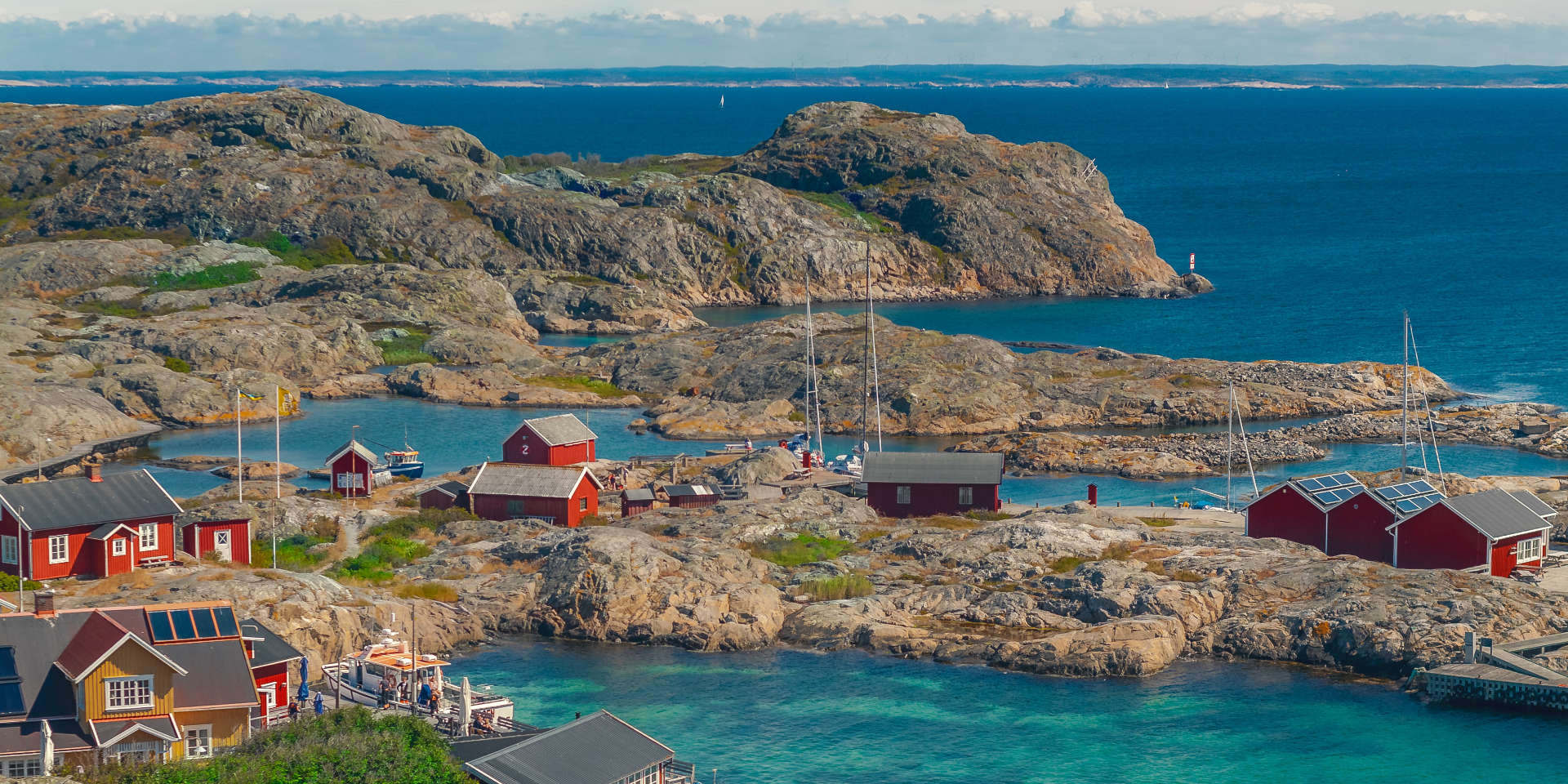

Västra Götalands Län
The northwest of southern Sweden
The province of Västra Götalands Län is located in the west of Sweden and stretches from the rocky northern part of the Swedish west coast into the country to Lake Vättern. Västra Götaland is also the northernmost province in southern Sweden (Götaland) on the west coast of the country.
Västra Götalands Län is one of the youngest provinces in Sweden. It was only created in 1998 when the former provinces Göteborgs och Bohus Län, Älvsborgs Län and Skaraborgs Län merged to form one large province. Västra Götaland includes the historical landscape of Västergötland, the landscape of Dalsland between Vänern and the Norwegian border, and Bohuslän on the west coast.
In the extreme northwest, the province extends to the Norwegian border. In the south, Västra Götaland extends to the coastal province of Hallands Län and Jönköpings Län in Småland. The eastern border of the province is formed by Lake Vättern and the province of Östergötland Län.
With an area of almost 24,000 square kilometres, Västra Götalands Län is by far the largest province in southern Sweden – with more than 1.7 million inhabitants, it is the second most populous province in Sweden after the capital region Stockholms Län. The population density is over 71 inhabitants per square kilometre, more than three times the national average.
The size of Västra Götaland inevitably means that the province is extremely diverse in terms of its landscape and the differences between the three large historical landscapes are particularly evident.
Bohuslän: The picturesque west coast
The westernmost part of Västra Götaland consists of the landscape Bohuslän on the west coast. It is characterised by a very jagged coastline of smooth, polished rocks with long, narrow bays. The 25 kilometre long Gullmarn in the municipality of Lysekil is the only real fjord in Sweden.
Off the coast of Bohuslän there is an archipelago consisting of numerous large and small islands and islets. In contrast to the east coast, however, both the archipelago and the coast in Bohuslän are much more barren. The old landscape with its numerous picturesque fishing villages, is one of the most popular holiday regions in Sweden.
The picturesque fishing village of Smögen is probably the best known of them. The lovely postcard idyll of the Smögenbryggan with its colourful fishing huts attracts tens of thousands of visitors every year. Other popular attractions on the coast include the Koster Havet National Park and the rock carvings in Tanum, which are part of the UNESCO World Heritage. With around 10,000 pictures, they represent the largest collection of prehistoric rock carvings in Europe.
Dalsland: Sweden in miniature
Dalsland consists of dense forests, mountains and an abundance of lakes and watercourses, which make the region an El Dorado for canoeists. The wilderness-like character of the nature makes Dalsland, which is a little bit off the beaten track, the preferred region for nature lovers and for all those who want to enjoy the peace and quiet in almost untouched nature.
A good example of Dalsland's original nature is the National Park Tresticklan on the border to Norway, which protects a large area of untouched nature. If you are interested in the main location of the filming of Astrid Lindgren's Ronia, the Robber's Daughter, you should visit the nature reserve Sörknatten, where most of the outdoor scenes were shot.
Despite its somewhat remote location, Dalsland has been inhabited since prehistoric times and is home to some 5,000 monuments from this time. One of the larger cultural monuments from the more recent past is the 19th century Dalsland Canal, considered one of the most beautiful waterways in Europe. By far the most visited attraction in Dalsland is the Akvedukten i Håverud – a trough bridge in which the Dalsland Canal is guided over the rapids of a river.
Västergötland: Ancient cultivated land near the great lakes
Västergötland is the largest part of Västra Götaland in terms of size and forms the region from the coast to the southern part of the area and between the two largest Swedish lakes, Vänern and Vättern. Immediately south of Vänern is the large plain Västgötaslätten with very fertile soils that merge into large continuous forests to the south and northeast. The deep forests in National Park Tiveden in the extreme north-east of the region are an example of this.
Another typical landscape of Västergötland consists of the 15 table mountains that rise from the otherwise flat plain in the centre of the region. The mountains of varying sizes reach heights of between 150 and 335 metres. The 335-metre-high Ålleberg in Falköping Kommun is the highest elevation in Västergötland.
In the region between the two large lakes there are several smaller lakes – among them the Hornborgasjön, famous for the annual mating dance of thousands of cranes. The southern part of Västergötland, on the other hand, has considerably more and larger lakes. The largest of these are Mjörn, which is almost 55 square kilometres in size, and Åsunden, with almost 33 square kilometres of water surface.
The three largest cities in Västra Götalans Län
The provincial capital of Västra Götalands Län and with almost 600,000 inhabitants the largest city in the province is Gothenburg. Situated at the mouth of the river Göta Älv on the Kattegat, the port city is the second largest city in Sweden after the capital Stockholm and before the Öresund metropolis Malmö.
The second largest city after Gothenburg is the city Borås in the southern part of the province with 75,000 inhabitants. Until the middle of the 20th century, Borås was the centre of the Swedish textile industry and is still today the focal point for fashion design and the venue for important fashion fairs. With a population of almost 50,000, the third largest city in the province is Trollhättan south of Lake Vänern on the Göta Älv river. Trollhättan is particularly well known for the dramatic spectacle that Göta Älv offers when it falls over the 32-meter-high waterfall Trollhättaefallen.




